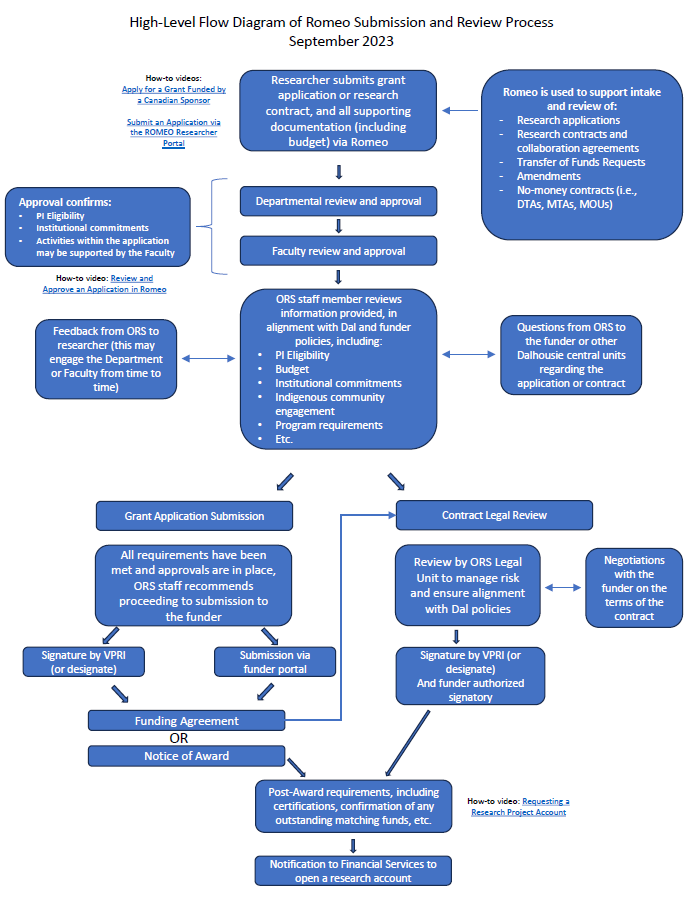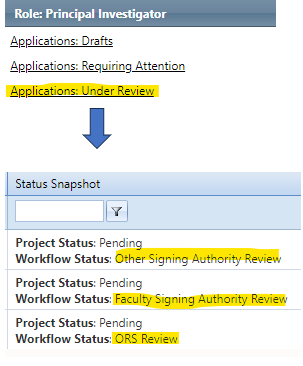Apply for Research Funding
As a �¼������ϲʿ���ֱ�� researcher, you can rely on the Office of Research Services for help as you prepare your application.��Application review has several main aspects:
- Ensuring that an application meets program and funder guidelines
- Providing comments back on an application to help improve it and increase its fundability
- Reviewing an application from an institutional perspective to make sure that policies are being adhered to, and aspects such as commitments and associated costs of research (overhead) are appropriate and accounted for.
Find tips for preparing a funding application, what to expect from the review process, and a list of internal and funder deadlines at the bottom of this page.
Staff are available to help at every step of the way. Contact information, including details for Faculty Research Facilitators, is available on the��staff page.
Prepare a Funding Application
While preparing your application, here are some items you'll need to consider.
��
Review Process
��

��
This flowchart is also available in on the Resources page.
Exclusions to this process include internal competitions for institutional awards, such as Canada Research Chairs, Canada Excellence Research Chairs, Canada Foundation for Innovation (large-scale competitions), and Canada First Research Excellence Fund, as well as the Operations and Maintenance Response Fund. Additional exclusions may include internal Expressions of Interest for programs where there is a limit on the number of applications that can be submitted by the institution (for example, Global Affairs Canada, Queen Elizabeth II Scholars, Robbins-Ollivier Award for Equity, Diversity and Inclusion, etc.).
Applications to these internal competitions are completed through direct submission by the Faculty Dean to the identified ORS contact and brought forward to a committee for review. Committee decisions are communicated back to the Faculty Dean by the VPRI or a designate. Application development should include submission via Romeo, as per the process outlined above.
��
Internal Deadlines
To help support planning and preparation for upcoming major competitions over the Fall term, the Office of Research Services has provided a list of deadlines, including the ORS internal deadlines.
For specific funding opportunity information, and for other upcoming opportunities, please be sure to review the ORS newsletter on a regular basis. Most opportunities have an internal deadline of 10 business days in advance of the funder’s deadline. As a reminder, whether the funding agency requires it or not, all applications must receive Departmental and Faculty approval and be approved by the Vice President Research & Innovation (or designate) prior to submission.
Please reach out to your��Research Facilitator��for more details or questions on a specific competition.
��
Major Funding Competitions in Fall 2024
ORS Internal Deadlines ranging from July 10 - December 2
Funder |
Program |
Funder Deadline(s) |
ORS Internal Deadline |
Responsible ORS Unit |
Research Nova Scotia (RNS) |
��(by invitation) |
July 31, 2024 at 1pm AST |
July 10, 2024 |
Institutional & International (I&I) |
Natural Sciences and Engineering Research Council (NSERC) |
��(SAP-DG) when requesting $500,000 or more per year |
Notice of Intent: August 1, 2024 �� Full application: October 1, 2024 |
Notice of Intent: N/A �� �� Full application: September 10, 2024 |
Grants & Contracts (G&C) |
NSERC |
��(SAP-MRS), ��(SAP-RTI) |
Notice of Intent: August 1, 2024 �� Full application: October 1, 2024 |
Notice of Intent: N/A �� �� Full application: September 17, 2024 |
G&C |
NSERC |
��(DG), ��(SAP-DG) �� |
Notice of Intent: August 1, 2024 �� Full application: November 1, 2024 |
Notice of Intent: N/A �� �� Full application: October 11, 2024 |
G&C |
Canadian Institutes of Health Research (CIHR) |
* �� |
Registration: August 14, 2024 �� Full application: September 11, 2024 |
Registration: N/A �� Full application: August 28, 2024�� |
G&C |
New Frontiers in Research Fund (NFRF) |
Notice of Intent: August 27, 2024 �� Full application: November 5, 2024 |
Notice of Intent: August 14, 2024�� Full Application: October 22, 2024�� |
G&C |
|
NSERC |
Full Application: September 9, 2024 |
Full Application: August 19, 2024 |
G&C |
|
NSERC |
September 3, 2024 |
August 20, 2024 |
G&C |
|
Social Sciences and Humanities Research Council (SSHRC) |
September 15, 2024 (where this falls on a Sunday, applications are accepted until September 16, 2024) |
September 2, 2024 |
G&C |
|
NSERC |
September 15, 2024 (where the funder deadline falls on a Sunday, applications are accepted until September 16, 2024) |
September 2, 2024 |
G&C |
|
NSERC |
) |
Full Application: September 22, 2024 (where the funder deadline falls on a Sunday, applications are accepted until September 23, 2024) |
Full Application: September 2, 2024 |
G&C |
SSHRC |
October 1, 2024 |
September 10, 2024 |
G&C |
|
Canada Foundation for Innovation (CFI) |
��(institutional approval required) |
Notice of Intent: October 2, 2024 ��
February 5, 2025 |
Notice of Intent: Anticipated September 11, 2024 |
I&I |
CFI |
(institutional approval required) |
October 15, 2024 |
September 16, 2024 |
I&I |
Various programs* *co-applicant applications may have earlier internal ORS deadlines based on the lead institution. |
October 7, 2024 |
September 23, 2024 |
I&I |
|
Nominations and Renewals (institutional approval required) |
October 22, 2024 |
September 23, 2024 |
I&I |
|
NSERC |
Full application: October 18, 2024 (by invitation) |
Full application: October 4, 2024 |
G&C |
|
NSERC |
October 25, 2024 |
October 11, 2024 |
G&C |
|
NSERC |
��(SAP-RTI) |
October 25, 2024 |
October 11, 2024 |
G&C |
SSHRC |
*co-applicant applications requiring partnership letters of support are asked to observe the ORS internal deadline |
October 29, 2024 |
October 16, 2024 |
G&C |
SSHRC |
November 1, 2024 |
October 21, 2024 |
G&C |
|
Various programs* *co-applicant applications may have earlier internal ORS deadlines based on the lead institution. |
November 5, 2024 |
October 22, 2024 �� �� |
I&I |
|
SSHRC |
November 15, 2024 |
November 1, 2024 |
G&C |
|
SSHRC |
December 15, 2024 (where the funder deadline falls on a Sunday, applications are accepted until December 16, 2024) |
December 2, 2024 |
G&C |
|
SSHRC |
December 12, 2024 |
November 29, 2024 |
G&C |
��
��
��
��
Find out the latest
Learn more about all current opportunities available in the Latest News for Researchers section.
Questions?
View our How-to Videos, or contact us.

